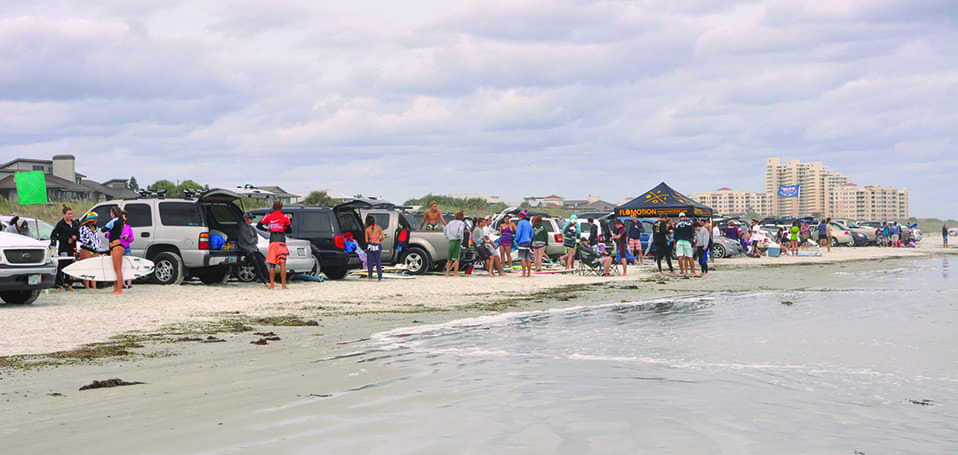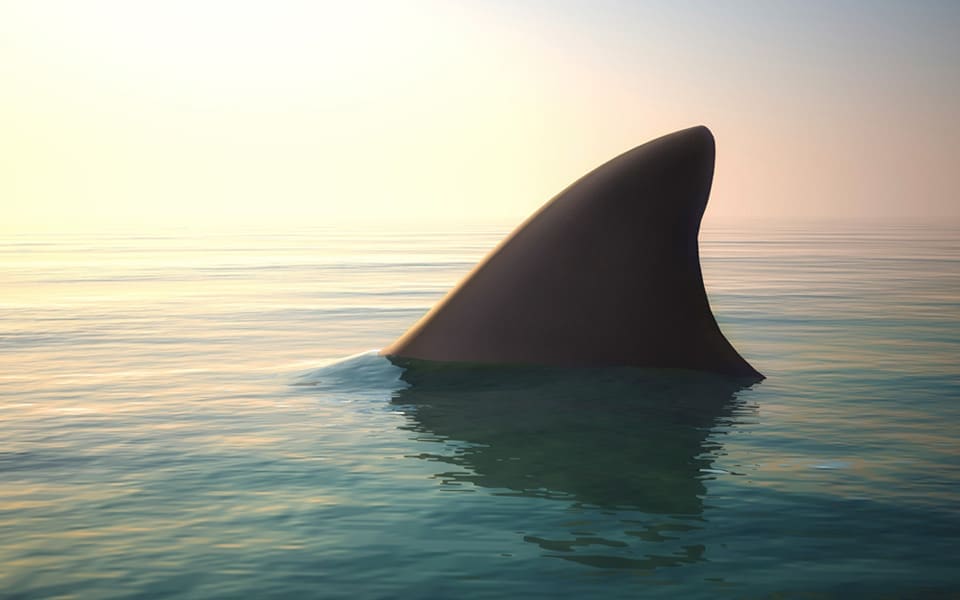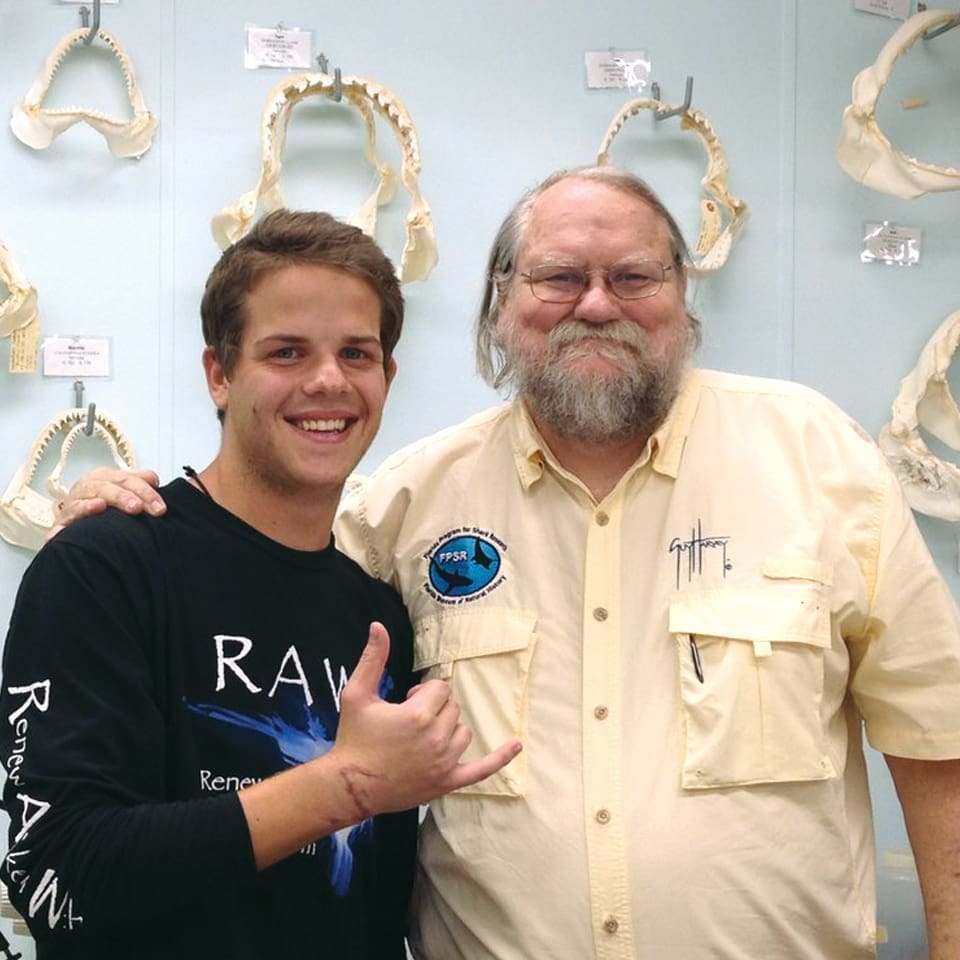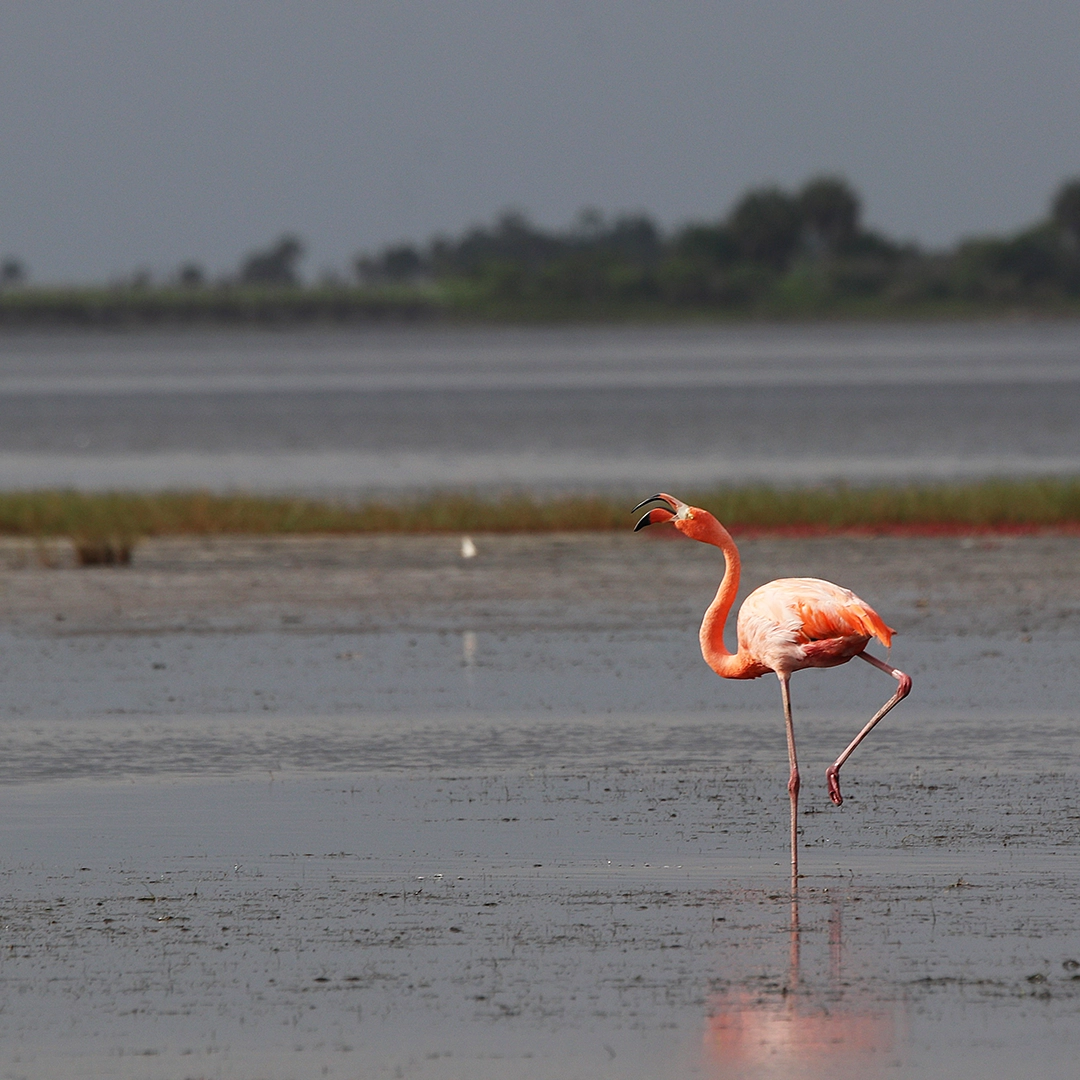by Lynn Waddell | February 24, 2016
Fin Frenzy
Shark-attack hype has some Floridians scared sharkless, while others dive headfirst into the watery wilderness. How safe are our oceans?
The sloppy 2-foot waves near Ponce Inlet on New Smyrna Beach snarl as they hit a sandbar, then crumble into furls of white.
The swells regroup and repeat. This central stretch of east coast has the dual distinction of being a prime surfing spot in the United States and the shark-bite capital of the world (thanks to The Discovery Channel’s Shark Week). New Smyrna is the annual home of several surfing competitions, and fans of the sport arrive in droves to drive on the beach to the jetties, park and plop a cooler down, hear the air horn blow, and see rows of surfers dash into the water with boards. The aquatic athletes’ passion for the pursuit obliterates the fact that they are entering Volusia County waters, where seven shark bites were recorded in 2015. Eight attacks were reported in neighboring Brevard County, home to Sebastian Inlet, another popular surfing spot. Yet most swell-seekers here could care less about swimming with sharks and blow off the predator’s rising celebrity status.

The shark headquarters moniker “is deceptive,” explains Lindsey Baldwin, 33, owner of Surfin’ NSB, a surf school in New Smyrna Beach. She says most bites occur by Ponce Inlet, “more than two miles from the nearest beach hotel.” The inlet has jetties, which cause waves to behave in ways that surfers like. These jettied waves, combined with submerged sandbars, make it easier for sharks to trap their natural prey. The inlet also has an expansive estuary, essentially a shark buffet. The rocky jetties attract fishermen, who throw ripe fish bait in the water, which lures keen-smelling sharks. Despite the fact that onshore fishermen can create potentially dangerous conditions for nearby swimmers or surfers, Florida does not restrict where or when they drop lines.
“Sharks hang out in between the sandbars because they know that’s where the fish are,” says New Smyrna’s Jacob Kotchpowell, 27, who tries to surf daily. “I see them anytime I go out at the inlet.”
While he’s enjoying the waves, Kotchpowell hasn’t noticed a change in the number of sharks, however. “Maybe they are a little more curious,” he says.
Shark Status
Although Florida’s reported shark bites didn’t spike in 2015, the media sensationalism and public interest seemed to have escalated. The International Shark Attack File (ISAF), based in the Florida Museum of Natural History in Gainesville, estimated a final number of 30 recorded unprovoked shark bites in 2015, and twice that for the entire U.S. There was one shark-related fatality in the country. Statistically, Florida has about a third of the global shark attacks each year, but it’s been that way for a while.

Maybe last summer’s barrage of YouTube videos of sharks near Florida’s shores and a steady stream of national news coverage intensified the perceived threat of sharks. A great white shark by the name of Katherine caused quite a stir last summer when OCEARCH, a nonprofit organization of scientists who tag and track Apex predator sharks, posted her proximity to Jacksonville Beach for the second consecutive year. Great whites’ just-passing-through status in Florida has long been documented, but this predator has never hurt anyone in the state. And while attack stories make for great ratings, people—not sharks—feed the unnecessary frenzy.
According to George Burgess, the longtime director of the ISAF, more sharks aren’t coming closer to shore. More people are frolicking in the ocean. He is the guy global reporters call when there has been a significant shark incident. Burgess, who looks like Santa Claus on vacation in a fishing shirt, signs his emails “Cheers” and works in an office decorated with walls of mounted shark jaws and desk-side jars of preserved shark organs. He says that given how many people enter the ocean each year, it’s surprising more people aren’t bitten. Improved technology partially accounts for the jump in publicized shark attacks, Burgess adds. Anyone can become a cub reporter with a smartphone in his or her hand.
“We live in a world that’s rich in communication and poor in perspective,” says Burgess.
Burgess has studied shark attacks in relation to population growth in areas where attacks have been reported. The white-haired scientist believes that the 2015 increase in serious shark attacks in North Carolina is more of an anomaly than a trend. Burgess loves going into the ocean despite his line of work, but doesn’t venture in as much as he did when his kids were little.
“I’m not scared to go into the water; I’m just older and busier,” he says. “But I do have respect for the wilderness. The ocean is wild. It’s like the Serengeti or the Rocky Mountains. We don’t just go unprepared and unthinking into the wilderness. Yet that’s what we do with the ocean. We go in with little clothing, which we wouldn’t do to approach a pride of lions.”
A lack of consideration for marine life also takes its toll on the ecosystem. It’s unbalanced, confirms Burgess, with respect to the overfished worldwide shark population.
“The story isn’t ‘shark bites man,’ it’s ‘man bites shark,’” says Burgess, referring to the dwindling shark count.
It takes decades for shark numbers to return to what they once were. The International Union for Conservation of Nature, based in Switzerland, estimates that 24 percent of the world’s shark population is endangered or threatened. To combat shark endangerment, Florida restricts fishermen to catching one shark per person per day. And the state has eliminated commercial fishing of sharks within Florida state waters.
Shark Sense
Floridians mostly encounter blacktip, spinner, blacknose, sharpnose and nurse sharks, all averaging in length between 3 and 7 feet. The sharks nosh on fish and only become interested in humans when provoked. With teeth and jaws made for catching and swallowing fish whole, when they confuse a human with prey, well, it hurts. Sharks see a human appendage flailing in churned-up, cloudy water and think: distressed fish.
“When we enter the sea, we are ecotourists,” says Burgess. “But we don’t necessarily keep this in mind. We splash like hell.”

In September 2015, experienced surfer Filippo Schiavo, 17, of St. Augustine, was in the water by Vilano Beach, about an hour and a half north of New Smyrna. Schiavo felt the mouth of a nearly 6-foot blacktip shark seize his arm. The top of his right wrist and hand was lacerated, severing seven tendons. Thanks to a talented surgeon in Gainesville and extensive physical therapy, Schiavo regained full use of his hand.
“This event has truly shown Filippo and our family that we should not take everyday tasks for granted,” says his mom, Patricia. “He knows how rare a shark bite is, and he feels very fortunate that he has this ‘cool’ tale to tell. He keeps surfing, and he doesn’t have any negative feelings about it. The negative for my family has been the medical bills.”
Part of the healing process for Schiavo, and his mother, involved meeting Burgess in his office. Burgess helped the Schiavos realize that Filippo experienced an unusual phenomenon—unintentionally becoming part of a natural process. Now he has a new respect and understanding of sharks’ innate behavior.
“He’s not afraid, but I am. He tells me, ‘The sharks are always in the water with us, and most of the time don’t bother us. We can’t live our lives in fear,’” Patricia says. “So I let him go in!”
Shark Stance
Sick of reporters with microphones, New Smyrna’s surfers downplay bites and avoid the press.
“If I were bitten, I’d want to get out of there before reporters arrived,” Baldwin says.
She adds that media coverage hurts business. Television programs about sharks do the most damage to this beach town’s economy. Baldwin says that every time there’s a special about sharks and attacks, she receives cancellations from 70 percent of her customers.
“Every tourist who inquires about lessons asks about sharks,” says Baldwin. “Of course there are sharks. It’s the ocean.”
On her website she posts calm explanations of what kind of shark-y conditions she will and won’t expose surf students to. New Smyrna surfers maintain a reassuring zen, playfully referring to the predators as “ankle biters.” And depending on the severity of a bite, they won’t always seek medical attention. When waves are good, not even a run-in with a shark can stop the surfing.
“One day, I saw a bitten surfer come out, wrap a towel around his ankle, and go back in,” Baldwin says. “I wouldn’t do that.”
Baldwin recalls her own shark encounter at Ponce Inlet.
“I had a spinner hit me in the back and knock me off my board,” she says, seeming more annoyed than worried.
Not everyone shares Baldwin’s cavalier attitude about seeing a fin glide through the water or feeling the bump of an unseen tail below the surface. But it’s attitude that determines how we react when the proverbial air horn of life blows—run for the waves or sit on the beach.
“If you’ve got a phobia about sharks, honor your phobia and don’t go in the water. And you will never be bitten,” Burgess says. “If you want to, go in the water. But reduce your chances. Don’t go in Ponce Inlet.”
Shark Tank Shopping
Several products claim to protect ocean lovers from getting hurt by sharks, but what’s worth the money?
Burgess dismisses shark repellant sprays (they can’t hold up to the ocean’s dissolution factor), black-and-white-striped board stickers and wet suits. But he is interested in devices using electromagnetic waves to discourage sharks. Installed on the bottom of a board or worn on the wrist, they emit currents that sharks dislike. “Products may have enough current to deter a 3-foot shark,” says Burgess. “But the bigger question is, will the current deter a 7-footer or greater?” Burgess hesitates to recommend any shark dissuader until more research is done.





